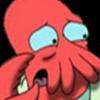Final Fantasy: The 4 Heroes of Light (DS) review"Rumors spread that this was going to be a reboot of the original 1987 Final Fantasy for the NES because of its western title and Square Enix's insistence that it would be a "throw back" to the days of 8-bit role playing games. Others thought it would be a remake of the 1991 Gameboy title "Final Fantasy Adventure" because of its Japanese subtitle "Final Fantasy Gaiden". Others still believed it would be a rehashing of another Gameboy title, "Final Fantasy Legend". All these rumors proved to be fa..." |
Rumors spread that this was going to be a reboot of the original 1987 Final Fantasy for the NES because of its western title and Square Enix's insistence that it would be a "throw back" to the days of 8-bit role playing games. Others thought it would be a remake of the 1991 Gameboy title "Final Fantasy Adventure" because of its Japanese subtitle "Final Fantasy Gaiden". Others still believed it would be a rehashing of another Gameboy title, "Final Fantasy Legend". All these rumors proved to be false. While not a remake, the 4 Heroes of Light is certainly a retro style RPG that draws from the days of old. Its narrative, atmosphere and difficulty all point towards an antiquated age of game mechanics that while functional are not for everyone.
You begin the game as Brandt, a young man in a small village who wakes up on his 14th birthday, charged with meeting the king to be proclaimed an adult. Upon entering the throne room he discovers the princess has been kidnapped by the witch who resides north of the village. After meeting the witch and returning home he is thrust into an adventure. Not very original but functional. The story is told through good dialogue and is very simple but in a minimalist style where some of the deeper implications of events are left up to the imagination as opposed to being picked apart by the narrative.
The 4 Heroes of Light uses a turn-based battle system where you choose the actions of your party members and they act along with the enemies based on stats. The variable here is the targeting system, which chooses the targets for you. The system actually works well but will leave the player *initially* feeling like they had little to do with the battle's outcome. For example, if you choose "Cure" the game would decide which party member will benefit from it. Again, at first it will feel cheap and unrewarding until you realize that choosing what to do rather than who to do it to is, in itself, a big strategic choice. Enemies will destroy your team pretty quickly so it's important to know when to heal and when to use a skill or attack. While it hearkens back to a time when hardware didn't allow for more complex decisions, it still ends up feeling fast paced and rewarding.
Inventory has also been retro-fitted in that you do not have a collective pool of items from which characters can choose. Instead, each member has their own 15 items they can carry including their spells, weapon, shield, armor and an accessory (to soften this the game offers a storage service available in each town area). If a character is fully equipped this leaves 11 slots of things to carry or less if they are a spell caster. I personally felt very limited by this until I understood the way the game's job system plays out. It's designed to encourage the player to craft dedicated roles as opposed to characters who can do a bit of everything. A black mage for example is going to have limited inventory because their slots will be filled with spells but they will be backed up by a white mage's healing or a warrior's items. The system definitely works but takes careful party planning.
The job system is unique and simple. There are 28 jobs called "crowns" that you acquire over the course of the game which also function visually as the character's headgear. In order to learn new skills you must place various gems you've acquired into their respective slots in each crown. When all slots are filled you gain a job level and learn a new skill. Each job level requires more gems and a larger variety of them. However, you don't get money for killing monsters, and selling these gems serves as your main source of income. The player will have to decide if they want to sell the gems or save them to use in their crowns.
Personally, my only issue is that mechanically 4 Heroes suffers from trying too hard to feel like an old game. The graphics are really well drawn and rendered, and I'll admit that I found myself humming some of the tunes long after powering off my DS. This does not outweigh the fact that some of the more antiquated video game mechanics will aggravate or confuse players who are more accustomed to the newer standards of the genre. Exhausting every possibility of exploration will get tiresome after a while, but if you are willing to put up with its vague linearity The 4 Heroes of Light has a lot to offer. It's a game worth buying if you are an old school role-playing enthusiast or at least someone that appreciates the old mechanics and difficulty of NES-era RPGs. Just don't assume it's easy because of its deceptively cute looks and storybook charm.
 |  |  |  |  |
Community review by Ninjamohawk (January 05, 2011)
A bio for this contributor is currently unavailable, but check back soon to see if that changes. If you are the author of this review, you can update your bio from the Settings page. |
If you enjoyed this Final Fantasy: The 4 Heroes of Light review, you're encouraged to discuss it with the author and with other members of the site's community. If you don't already have an HonestGamers account, you can sign up for one in a snap. Thank you for reading!
User Help | Contact | Ethics | Sponsor Guide | Links








